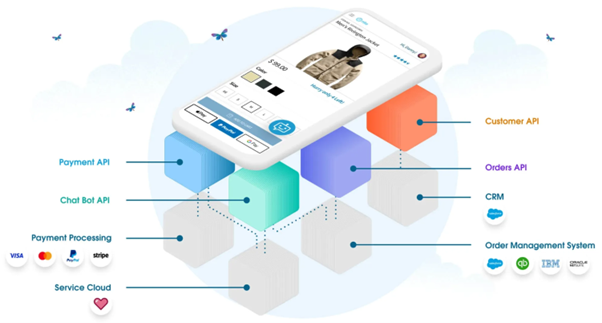Table of Contents
Today’s companies are not only interested but have the need to make the most of the resources, be efficient, and stay competitive. That’s why tools such as Robotic Process Automation and Intelligent Process Automation, as the next step, are a demanding need. It has become a mainstream investment priority for decision-makers because of the benefits it provides.
01
of 04
What is Intelligent Process Automation (IPA) and its role in MuleSoft’s offerings
Robotic Process Automation (RPA) uses intelligent automation technologies and software that facilitate the execution of repetitive office tasks like clicking buttons, entering data into systems, understanding what’s on a screen, and a whole range of other defined actions. These technologies can recreate human activities in a practical, faster, and simpler way. For more information on RPA, you can check our full article on What is Robotic Process Automation.
Although RPA is a valuable tool, it only performs pre-defined tasks, as it can’t learn, improve, or incorporate data like emails and documents. Intelligent Process Automation (IPA) fills this gap.
IPA combines RPA, artificial intelligence (AI), natural language processing (NLP), machine learning (ML), and other components to automate more extensive decision-based processes. These components allow a computer to simulate human intelligence, understand, interpret, and manipulate spoken and written language, and identify patterns to make predictions and forecast outcomes. All of this while analyzing data faster than people, and learning from past decisions to enhance business values across the entire company.
In MuleSoft‘s ecosystem, IPA plays a critical role by enhancing their Anypoint Platform. MuleSoft leverages IPA to streamline integration processes, automate workflows, and enable smart data processing:
- Smart Workflow Automation: Leveraging RPA to automate routine tasks and workflows, reducing manual intervention.
- Improving Data Quality: Utilizing ML to identify and correct data anomalies, ensuring higher data integrity.
- Predictive Insights: Employing AI-driven analytics to provide predictive insights that inform business decisions and strategies.
This helps businesses connect applications, data, and devices more effectively, providing a seamless integration experience that adapts to evolving business needs across all sectors.
You should check out our MuleSoft: System Integration and its Benefits article to learn more about MuleSoft’s capabilities.
02
of 04
Core functionalities and how it goes beyond traditional automation

- Advanced Data Processing and Cognitive Capabilities: IPA uses AI and ML to handle unstructured data, enabling more comprehensive and accurate data analysis. Traditional automation focuses on rule-based tasks, while IPA incorporates AI to understand and process natural language, recognize patterns, and make predictions.
- Decision Making: AI-driven analytics allow systems to make informed decisions, improving the speed and accuracy of business processes. Traditional automation executes predefined rules, whereas IPA can analyze data, evaluate options, and make decisions autonomously.
- Adaptive Learning: ML algorithms enable IPA to learn from previous interactions, continually improving process efficiency and outcomes. Unlike static traditional automation, IPA systems use ML to learn from data and adapt to new situations, continuously improving performance.
- Task Automation: RPA automates repetitive and rule-based tasks, allowing human workers to focus on more strategic activities.
- End-to-End Process Automation: IPA integrates multiple systems and workflows, providing a cohesive automation solution across different business functions.
03
of 04
Benefits of IPA with MuleSoft
Due to intelligent process automation’s cognitive capabilities and ability to mimic human actions, IPA tools can be instrumental in increasing operational and business efficiency. IPA can improve:
- Customer experience: IPA can improve internal processes for faster and more accurate customer data results..
- Workforce productivity: Automating labor-intensive tasks that previously required human intervention enables employees to reallocate their time to other tasks that need a human touch to it
- Accuracy: Manual data entry is often prone to error and IPA improves data accuracy and ensures consistency across data sets.
- Compliance: A consistent and automated approach helps organizations follow security requirements and regulatory compliance.
- Enhanced Efficiency: By combining RPA, AI, and ML, IPA can handle more complex tasks that involve unstructured data and require a higher level of cognitive function, resulting in greater overall efficiency and effectiveness.
Besides all of these benefits, we can not leave out the time and costs that IPA saves a company. The streamlined processes and increased employee productivity enable organizations to complete tasks faster leading to more ROI, efficiency, and overall increase in performance.
Take as an example Airbus’ digital transformation that takes flight with APIs:
Airbus needed to significantly ramp up aircraft production while decreasing costs and sustainably improving efficiency. Since the company’s legacy systems could not support this massive growth, Airbus needed to revolutionize its approach to IT. Airbus needed to adopt new technologies that would enable the company to be agile and secure, and deliver new solutions to market faster. One of the first decisions was to implement Anypoint Platform to drive digital transformation and enable an API-first strategy across the organization. It allowed for delivering IT projects 4x faster.
04
of 04
If you are still in doubt about implementing IPA, we sum it up for you
IPA revolutionizes traditional business processes and its core functionalities highlight its superiority over traditional automation methods. MuleSoft integration not only boosts efficiency but also ensures that businesses can quickly adapt to evolving needs.
Partnering with Stellaxius will maximize the benefits of IPA and MuleSoft as we offer the expertise to implement and optimize these technologies, ensuring a seamless integration experience and unlocking the full potential of intelligent automation as it can be challenging.
Read the article Mulesoft Integration: solving 5 Challenges of digital transformation about the challenges of Mulesoft Integration and how MuleSoft helps to overcome them.
This collaboration empowers businesses to drive innovation, increase productivity, and achieve superior outcomes in an increasingly competitive landscape.






